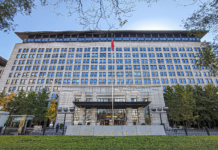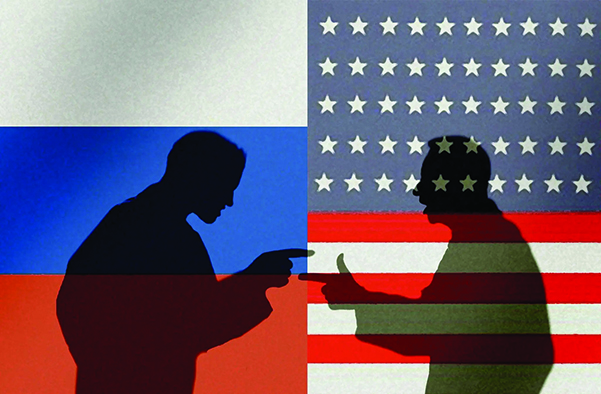The Russia-Ukraine crisis is one of the most consequential and unsettling crises of the 21st century, woven into a typical historical fabric of shared culture and contentious land disputes. Before the dissolution of the Soviet Union, the two nations were highly interconnected with each
other by a mosaic of cultural affinities and intertwined geographies. However, their relationships have been marred by growing geopolitical tensions, culminating in Russia’s audacious and wild invasion of Ukraine in Feb 2022. Conflict transformed into a highly disturbing regional and global crisis from a simple land dispute, engaging both countries in a complete war situation.
The Russia-Ukraine crisis can be attributed, to several basic reasons, including economic factors. One key aspect of this crisis is Europe’s dependency on Russian gas, as Russia possesses world’s largest natural gas deposits. One of the main pipelines includes Nord 1 and Nord 2 pipelines, which have a combined capacity of 55 billion cubic meters and directly connect Russia to Germany. These pipelines hold significant geopolitical and eco-strategic importance for both Russia and Europe, especially in Eastern Europe. Furthermore, Europe’s energy dependency on Russian gas is facilitated through various tracks including several critical other pipelines, such as the Ukraine Transit and Yama-Europe routes.
This crisis has escalated due to political reasons, especially a leadership rivalry between the United Kingdom and Germany. Following World War II, the United Kingdom experienced a gradual decline from the position of leading global naval power. Conversely, Germany developed strong energy relationships with Russia and initially hesitated to provide military or financial aid to Ukraine, fearing an escalation of the crisis and potential disruption in its economic, energy, and diplomatic ties with Russia.
In contrast, the United Kingdom adopted a more aggressive approach in the post-Brexit era, providing military support to Ukraine and explicitly criticizing Germany for its alleged passive response. The United Kingdom wanted to showcase itself as a strong global leader, taking decisive actions. The tussle occurred when Germany saw itself as a natural leader of Europe. While the United Kingdom, in the post-Brexit wanted to prove its relevance and leadership on the global stage.
During the era of USSR, gas prices in Eastern Europe remained relatively stable. However, following the disintegration of the Soviet Union, gas prices experienced a significant surge. Russia demanded higher payments from the Europe to meet the requirements of global market standards, with Gazprom, Russia’s state-controlled energy giant, attributing the price increases to a range of factors.
Factors include economic collapse, and secretive retaliatory measures against the West stemming from the lingering dynamics of the cold war. However, it is essential to acknowledge that the United States played a significant role in orchestrating the gas crisis in Eastern Europe, following its eco-strategic policy to leverage the situation for its economic benefits. While further undermining Russia’s economy to diminish its strong influence across the region.
The United States of America, after orchestrating the gas crisis between Europe and Russia, reassured Europe to be optimistic, promising to supply the required amount of gas to Europe and alleviate their concerns. However, the United States facilitated an agreement and established a partnership with Qatar, the largest producer of liquified Natural Gas (LNG) to fulfill the gas demands of Europe. As a result, the USA’s LNG giant Cheniere Energy significantly increased its exports from Sabine Pass Terminal in Louisiana redirecting more LNG supplies to the European markets. In addition, by August 2022 exports between the U.S and Qatar increased by 60% that drove Europe out of this limping crisis, enabling it to meet its required gas demands.
The United States adopted a strategy of surround-and-attack, establishing military bases around Russia, following their historic rivalry dating back to the Cold War. From the beginning of the crisis, the intent of the United States was clear: to align Ukraine as a strong ally and leverage its territory against Russia to undermine its growing influence in Europe. At present, the United States has been successful in establishing several military installations around Russia in Eastern Europe, including the 2nd Cavalry Regiment in Poland, air bases in the Baltic States, bases in Romania, Bulgaria, and Finland, etc.
The United States of America misled Ukraine by presenting an enticing, prosperous, vision of independent and democratic nation in the Modern Eastern Europe. Ukraine ultimately faltered when it began to believe that only the U.S can make it democratic and independent state, thriving it out of Russian influence, eventually leading to signing of a defense agreement known as “Budapest Memorandum”.
The memorandum between the U.S. and Ukraine was based on multilateral engagement, involving NATO and Ukraine, under which Ukraine will relinquish its 3rd largest nuclear arsenal and join the Treaty on Non-proliferation of nuclear weapons (NPT). In return, NATO countries committed to providing defense, as well as safeguarding Ukraine’s territorial integrity and sovereignty. Unfortunately, Ukraine failed to recognize that the primary outcome would be the
utilization of its territory as a strategic tool against Russia. Meanwhile, the United States would leverage the arrangement without exposing itself to any direct danger.
Budapest memorandum and Ukraine’s surrender to the U.S exposes the underlying greed factors of Ukraine, allowing the U.S to handle every matter. Firstly, Ukraine sought its alienation as an opportunity for more financial aids, following its transition from Soviet-style command economy to a market economy. Secondly, Ukraine sought to achieve defense, arms assistance, and security arrangement in exchange for de-nuclearization of its program, by allying with the NATO countries that has almost failed in 2024. Thirdly, the United States lured Ukraine into a trap by showcasing vision of legitimate democracy, persuading it with promises of a prosperous and democratic future. And ultimately Ukraine fell in to this trap, badly, by signing the agreement.
The U.S. was less concerned about legitimate democracy in Ukraine and more focused on pursuing its own global and regional interests. These include hampering Russia’s growing influence in the region, which was expanding westward. And preventing Russia from re-gaining dominance over its former states. Following its withdrawal from Afghanistan, the U.S. prioritized shifting the focus of the conflict from Afghanistan to Eastern Europe. By doing so, it gained a new theatre for war, enabling arms trade, the testing of new military technologies, and the continuation of its war-driven economy model. Meanwhile, the U.S. remains highly unaffected by the conflict, conversely benefitting its war economy and Ukraine bears the brunt of consequences.






















